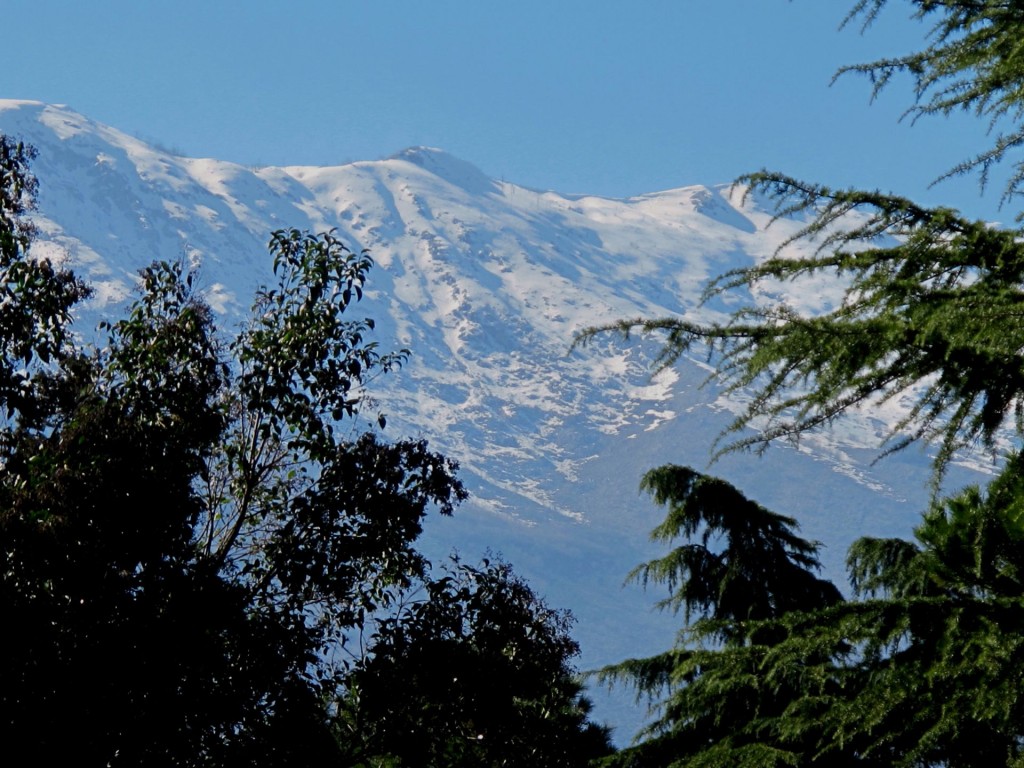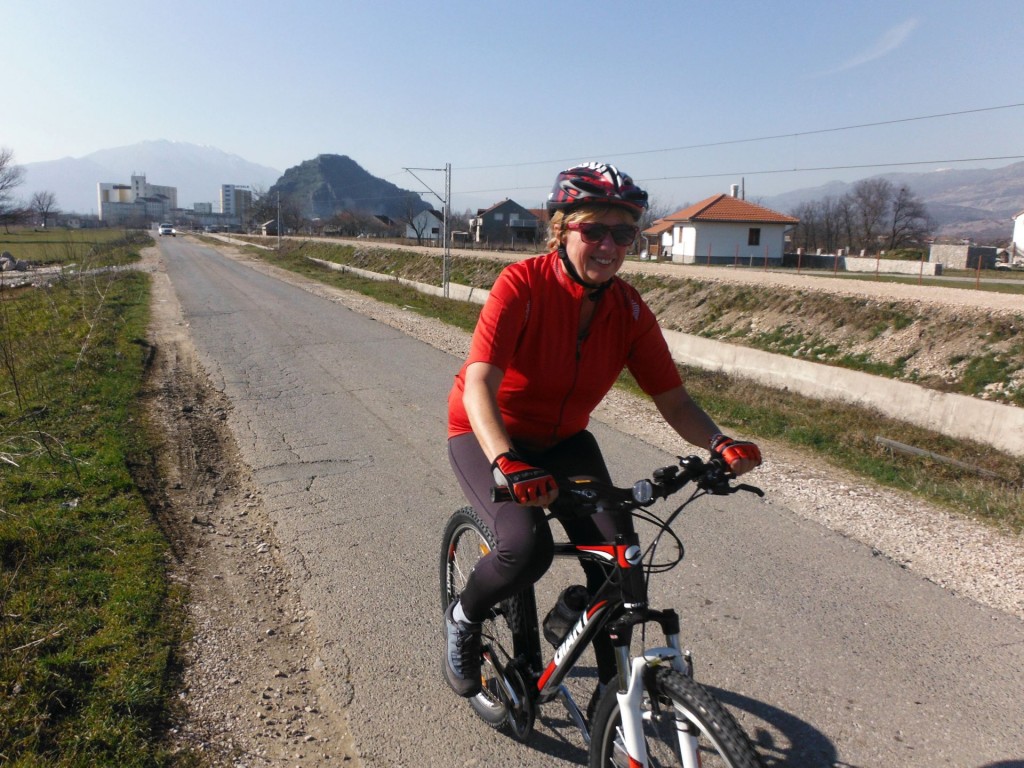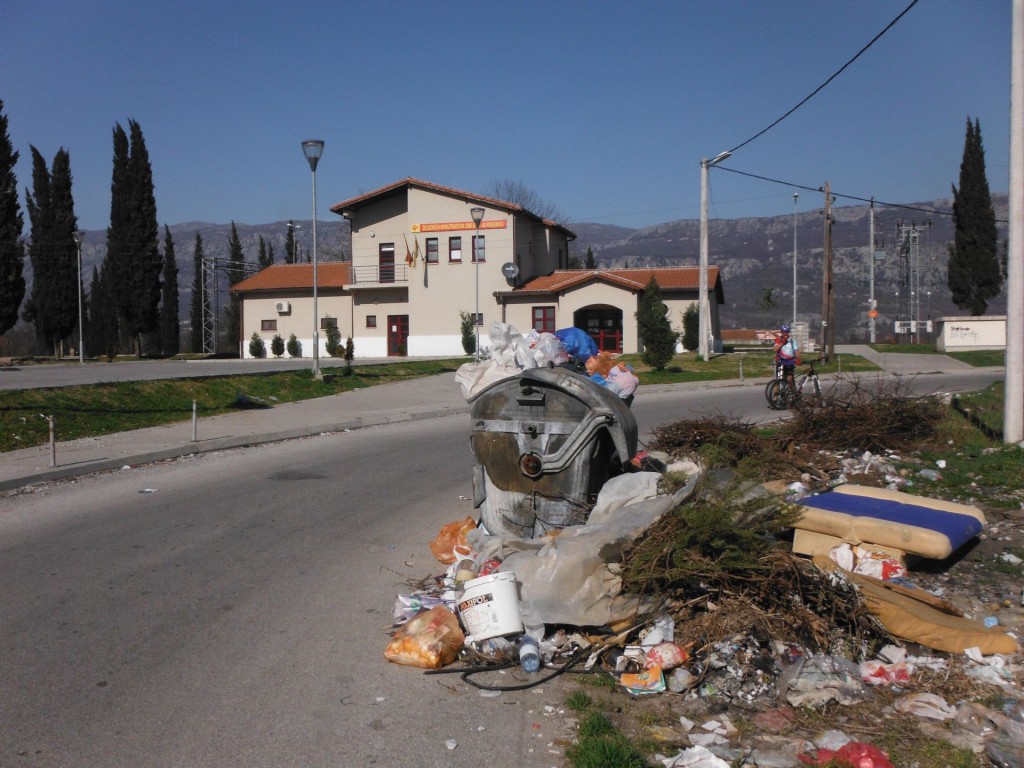 Our first biking tour this year had to be an easy one, as we needed some training. We decided to make a trip through the Bjelopavlići plain, taking the old road from Podgorica to Danilovgrad and then back along the other side of the Zeta river, passing by the Ždrebaonik monastery and further returning through Martinići, Spuž and Rogami (around 45 km).
Our first biking tour this year had to be an easy one, as we needed some training. We decided to make a trip through the Bjelopavlići plain, taking the old road from Podgorica to Danilovgrad and then back along the other side of the Zeta river, passing by the Ždrebaonik monastery and further returning through Martinići, Spuž and Rogami (around 45 km).
The old road to Danilovgrad appeared to be in a rather bad shape. Moreover, the green landscape of Bjelopavlići was totally spoiled by numerous piles of trash that could be seen everywhere along the road. Bottles, plastic bags, empty cans, boxes and even old fridges and furniture … How is it possible that people are just throwing their things everywhere around? And another question: is there anyone – the municipality, NGOs, voluntary groups – who feels responsible for cleaning up this mess?
 Although biking in Montenegro is a dangerous activity, as car drivers are not used to bikers, we safely arrived in Danilovgrad. This charming little town is situated at the foot of the beautiful snowy mountain of Garač, which has an altitude of 1436 m above sea level. The central square is characterized by a war monument and surrounded by nice old houses, painted in different colors. The Art Colony with its garden full of sculptures is a very attractive place. After a short break we continued our trip by turning right and passing over the Zeta bridge.
Although biking in Montenegro is a dangerous activity, as car drivers are not used to bikers, we safely arrived in Danilovgrad. This charming little town is situated at the foot of the beautiful snowy mountain of Garač, which has an altitude of 1436 m above sea level. The central square is characterized by a war monument and surrounded by nice old houses, painted in different colors. The Art Colony with its garden full of sculptures is a very attractive place. After a short break we continued our trip by turning right and passing over the Zeta bridge.
But as soon as we left the town, our trip through garbage land continued. What a pity! The scenery around the Ždrebaonik monastery is beautiful and Spuž has an interesting fortress, built by the Ottomans in the beginning of the 18th century. The fortress is situated on a hill above the town and might become a very nice hiking destination, IF somebody would just clean and mark the trail uphill.
 In and around Spuž, the uncontrolled disposal of waste is even worse than in Danilovgrad. Litter could be found everywhere and in front of the renovated railway station we passed another big illegal dump. The road then passed between the emerald green Zeta river and the railway from Podgorica to Nikšić to Podgorica. Trash in Pričelje, rubbish on the banks of the river ….. With a certain nostalgy I looked at the faraway mountains of Piperi, totally disappointed in the achievements of the “Ecological State of Montenegro”. Regardless of all projects and awareness campaigns in the last few years, I have the feeling that the waste problem is getting worse and worse. What can we do to clean up Montenegro? Or do we just have to wait until summer, when grass and green leaves will cover many irregularities?
In and around Spuž, the uncontrolled disposal of waste is even worse than in Danilovgrad. Litter could be found everywhere and in front of the renovated railway station we passed another big illegal dump. The road then passed between the emerald green Zeta river and the railway from Podgorica to Nikšić to Podgorica. Trash in Pričelje, rubbish on the banks of the river ….. With a certain nostalgy I looked at the faraway mountains of Piperi, totally disappointed in the achievements of the “Ecological State of Montenegro”. Regardless of all projects and awareness campaigns in the last few years, I have the feeling that the waste problem is getting worse and worse. What can we do to clean up Montenegro? Or do we just have to wait until summer, when grass and green leaves will cover many irregularities?


What a pity Marianne! The waste problem is the single biggest risk to Montenegro’s desire to increase tourism, especially active tourism inland in what would otherwise be staggeringly beautiful countryside. I liken it to a large, ugly wart on the face of a beautiful woman or handsome man – it’s all you can look at and leaves a lasting impression. These eyesores are everywhere, in National Parks and tourist hotspots as well as off the beaten track places like you visited. Last October after the first rains, you could spot more floating plastic bags than birds at Manastirska Tapija, a supposedly protected bird reserve. I don’t know what can motivate the populace to do their bit in the absence of the kind of effective state services Western Europeans are used to. Even Africa, which I’ve traveled extensively, isn’t as bad as Montenegro, ironically because poverty means a plastic bag, beer can or bottle is worth something.